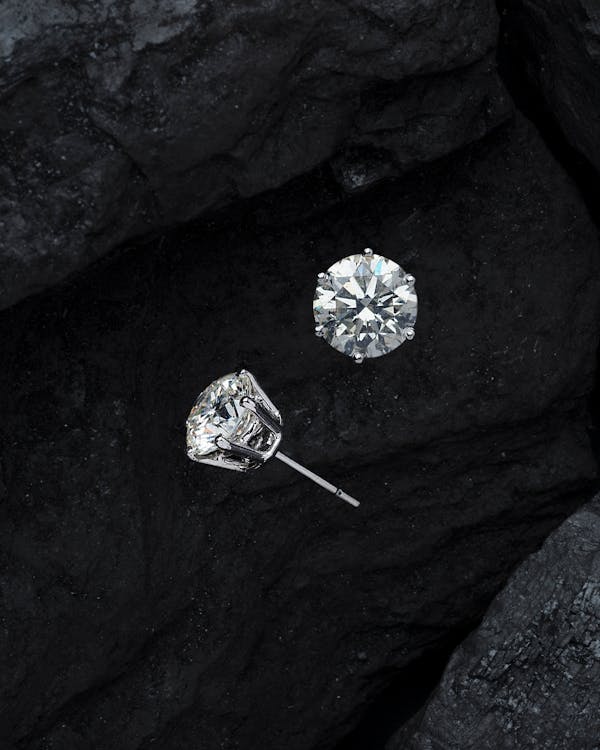Diamonds are prized for their beauty, rarity, and durability. When shopping for diamonds, it’s essential to understand the different types available: natural, synthetic, and treated. Each type has unique characteristics, and knowing these can help you make an informed decision. This article will provide an overview of these diamond types, including their features, benefits, and considerations.
Table of Contents
- Natural Diamonds
- Synthetic Diamonds
- Treated Diamonds
- Comparison Table
- Choosing the Right Diamond
- Conclusion
Natural Diamonds
What Are Natural Diamonds?
Natural diamonds are formed deep within the Earth’s mantle under extreme pressure and temperature over billions of years. They are then brought to the surface through volcanic eruptions.
Characteristics of Natural Diamonds
- Formation Time: Billions of years
- Origin: Deep within the Earth’s mantle
- Rarity: Very rare
- Value: High
- Certification: Typically certified by gemological institutes like GIA or AGS
Benefits of Natural Diamonds
- Unique History: Each natural diamond has a unique geological history.
- Investment: Often considered a good investment due to their rarity and value retention.
- Brilliance and Fire: Known for their exceptional brilliance and fire.
Considerations for Natural Diamonds
- Cost: Natural diamonds are generally more expensive than synthetic or treated diamonds.
- Environmental Impact: Mining can have significant environmental and ethical implications.
Synthetic Diamonds
What Are Synthetic Diamonds?
Synthetic diamonds, also known as lab-grown or man-made diamonds, are created in a controlled laboratory environment using advanced technological processes.
Characteristics of Synthetic Diamonds
- Formation Time: Weeks to months
- Origin: Laboratory
- Rarity: Not rare (manufactured)
- Value: Lower than natural diamonds
- Certification: Can be certified like natural diamonds
Benefits of Synthetic Diamonds
- Cost-Effective: Typically less expensive than natural diamonds.
- Ethical and Sustainable: No mining is involved, making them a more sustainable and ethical choice.
- Quality Control: Consistent quality due to controlled manufacturing processes.
Considerations for Synthetic Diamonds
- Perception: May not hold the same status or perceived value as natural diamonds.
- Resale Value: Generally lower resale value compared to natural diamonds.
Treated Diamonds
What Are Treated Diamonds?
Treated diamonds are natural diamonds that have undergone various treatments to enhance their appearance or color.
Types of Treatments
- Clarity Enhancement: Filling cracks or fractures to improve clarity.
- Color Enhancement: Using high heat or radiation to change or improve color.
- Laser Drilling: Removing inclusions through laser technology.
Characteristics of Treated Diamonds
- Formation Time: Billions of years (natural formation) + treatment time
- Origin: Earth + treatment processes
- Rarity: Less rare due to enhancements
- Value: Lower than untreated natural diamonds
- Certification: Must disclose treatments
Benefits of Treated Diamonds
- Cost: More affordable than untreated natural diamonds.
- Appearance: Enhanced visual appeal.
- Availability: More readily available due to treatments.
Considerations for Treated Diamonds
- Durability: Some treatments may affect the diamond’s durability.
- Transparency: Disclosure of treatments is crucial for fair valuation.
- Resale Value: Lower resale value compared to untreated natural diamonds.
Comparison Table
| Feature | Natural Diamonds | Synthetic Diamonds | Treated Diamonds |
|---|---|---|---|
| Formation Time | Billions of years | Weeks to months | Billions of years + treatment time |
| Origin | Earth’s mantle | Laboratory | Earth + treatment processes |
| Rarity | Very rare | Not rare | Less rare due to enhancements |
| Value | High | Lower | Lower than untreated natural diamonds |
| Certification | GIA, AGS, etc. | Same as natural diamonds | Must disclose treatments |
| Cost | High | Lower | Lower than untreated natural diamonds |
| Environmental Impact | High (mining) | Low (lab-grown) | Depends on the treatment process |
| Resale Value | High | Lower | Lower than untreated natural diamonds |
| Ethical Concerns | Possible (mining) | Minimal (lab-grown) | Depends on treatment methods |
Choosing the Right Diamond
Factors to Consider
- Budget: Determine your budget to decide between natural, synthetic, or treated diamonds.
- Purpose: Consider the occasion and use. For example, engagement rings may traditionally favor natural diamonds.
- Preferences: Decide if you prefer a natural history or modern technology (synthetic) or enhanced beauty (treated).
- Ethics and Sustainability: If environmental impact and ethical sourcing are important, synthetic diamonds might be the best choice.
Tips for Buying Diamonds
- Certification: Always ask for certification from reputable gemological institutes.
- Transparency: Ensure full disclosure of any treatments.
- Comparison: Compare similar diamonds (size, cut, clarity) across types to understand value differences.
- Reputable Sellers: Purchase from reputable jewelers with good reviews and clear return policies.
Conclusion
Understanding the differences between natural, synthetic, and treated diamonds can help you make an informed decision. Each type has its own benefits and considerations. Natural diamonds offer unique history and high value, synthetic diamonds provide ethical and cost-effective alternatives, and treated diamonds enhance beauty at a lower price. Consider your personal preferences, budget, and ethical values when choosing the right diamond for you.
